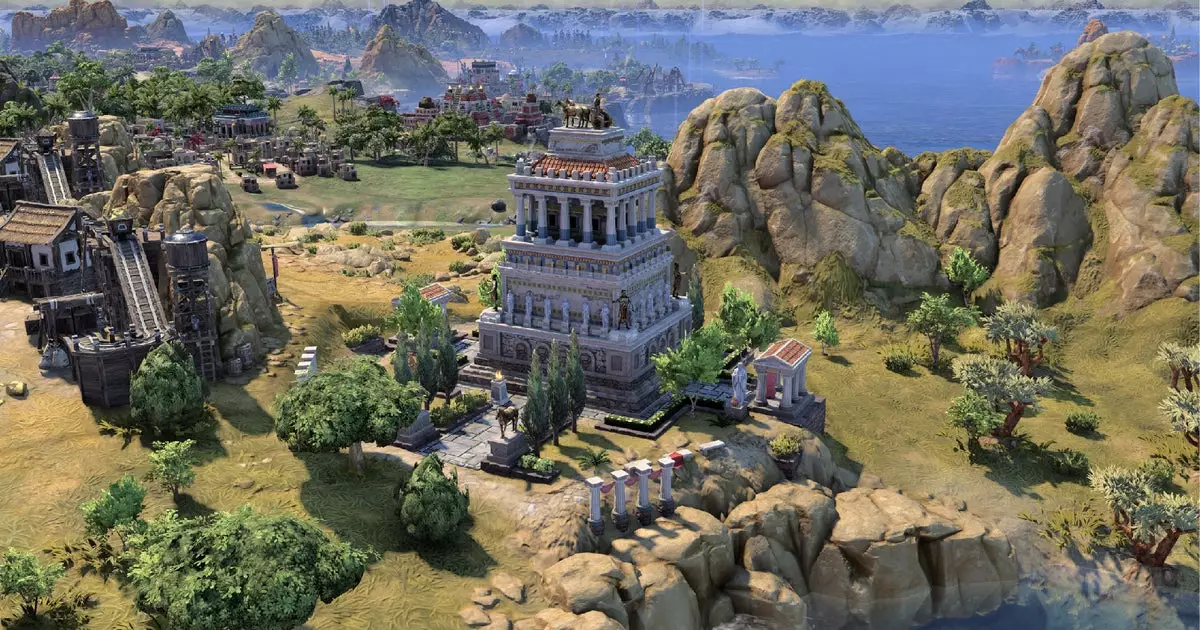The latest update for Civilization 7, version 1.2.4, marks a significant turning point in the game’s evolution, prompting both excitement and controversy within its dedicated community. As a series known for its complex mechanics and high replayability, Civ 7’s ongoing development reflects a delicate balancing act—striving to refine the experience while managing the inevitable disruptions that come with substantial changes. This update exemplifies how developer decisions ripple through the player base, often exposing core tensions between innovation and stability.
The update’s arrival came just before the highly anticipated Geoff-fest, positioning it as a pivotal moment for players awaiting fresh content and gameplay adjustments. While the patch primarily focused on broad rebalancing, particularly concerning world wonders, its repercussions extended far beyond surface-level tweaks. Firaxis’s acknowledgment of mod disruptions highlights the often-underestimated intricacies of maintaining a mod-friendly universe in the face of substantial internal changes. Their explanation surrounding the move to a new UI system demonstrates an interesting philosophical shift—prioritizing future scalability and user experience at the risk of current stability.
The High Cost of Innovation: A Necessary Sacrifice
Firaxis’s decision to overhaul the UI’s core architecture showcases their commitment to progressive innovation, but it also reflects a recognition of the delicate ecosystem in which Civ operates. Moving to a new system has effectively made the interface more dynamic and responsive, but the ripple effect caused extensive mod breakage. The community’s reaction is understandable—modders have long been the backbone of Civ’s longevity, enabling niche gameplay styles and extending the lifespan of the game well beyond initial releases. By acknowledging the breakage openly, Firaxis demonstrates a respect for their community, even if the timing is inconvenient.
This situation underscores a deeper truth: meaningful progress often involves temporary hardship. Players who wish to avoid the chaos associated with such deep changes have the option to revert to the legacy branch via Steam, serve as a reminder that the industry’s best developers recognize the importance of choice. Firaxis’s explanation also hints at a future where UI improvements will be less disruptive, suggesting an incremental approach to complex system upgrades instead of sweeping redesigns.
Balance of Power: Tweaking Wonders and Renaissance of Gameplay
Beyond the technical behind-the-scenes adjustments, the patch introduces a slew of gameplay rebalancing that strives to craft a more equitable and strategic environment. Wonders, often a double-edged sword, have been adjusted to prevent overpowered strategies, emphasizing a more nuanced approach to their construction. For example, the repositioning of wonders like the Colossus and Monks Mound to different civic branches redefines their strategic relevance, compelling players to rethink early game priorities.
Some wonders have been toned down, such as the Gate of All Nations and the House of Wisdom, to curb their influence as all-too-easy routes to victory, particularly when combined with certain civilization bonuses. Conversely, others like Petra and the Eiffel Tower have been nudged to retain their attractiveness without becoming overpowered. This delicate balancing act indicates Firaxis’s intent to foster a more diversified game, where victory isn’t dictated by a handful of dominant strategies.
Age transition mechanics, too, have been refined to make continuity more meaningful. Alliances, gold, and influence transition smoothly across ages, promoting consistent progression and strategic planning. Such changes suggest an inclination toward rewarding long-term investments rather than short-sighted tactics.
Artificial Intelligence and User Engagement: Moving Toward Smarter Opponents
One of the more subtle yet crucial elements of this update pertains to the AI. Firaxis has taken steps to make AI opponents more challenging and less prone to nonsensical actions, such as accepting treaties or alliances that are clearly disadvantageous. This suggests a desire to make the game more competitive and engaging, pushing players to adapt rather than exploit predictable AI behavior.
Furthermore, interface improvements are woven into this update, demonstrating Firaxis’s recognition that user experience remains central to sustained engagement. While small in appearance, these tweaks can significantly impact how intuitive and enjoyable it is for players to manage vast empires. For a game as layered as Civ 7, streamlining interface elements provides immediate gratification and reduces frustration, encouraging players to experiment with more ambitious strategies.
Reflecting on the Long-Term Roadmap
While some may see the changes as disruptive, the overarching philosophy evident in this update is one of laying a stronger foundation. Firaxis appears committed to evolving Civ 7 into a more refined and balanced experience, even if that evolution entails occasional turbulence. It’s a testament to a developer willing to take risks and innovate, understanding that the greatest growth often comes with challenges.
The timing and scope of this update suggest Firaxis is aware of the game’s community expectations and the importance of sustainable development. Moving forward, players can expect more incremental refinements, aimed at refining gameplay mechanics while maintaining the essence of Civ’s strategic depth. This balancing act will define the series’ future—an ongoing dance between innovation and preservation, handled with an unwavering commitment to a richer, more sophisticated gaming experience.

